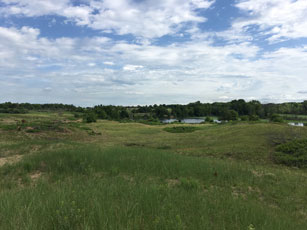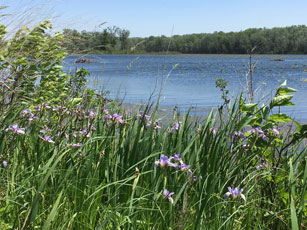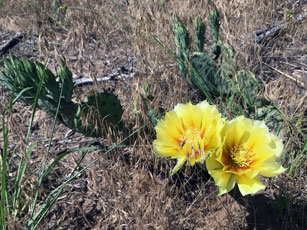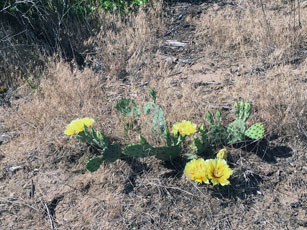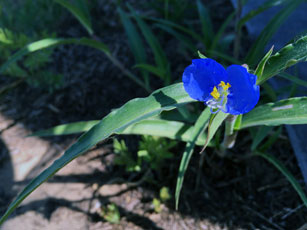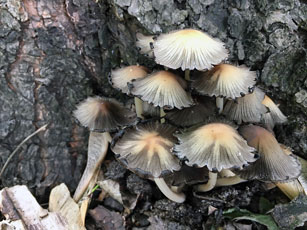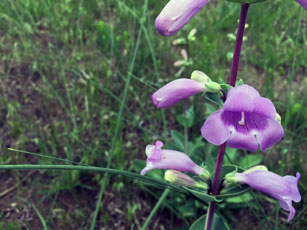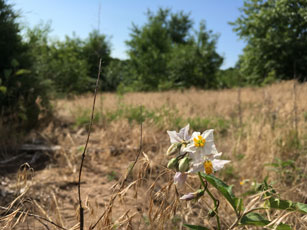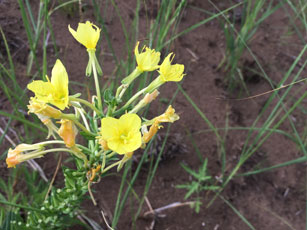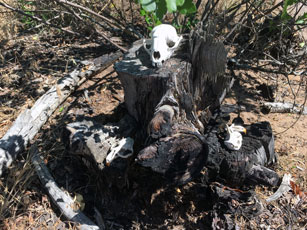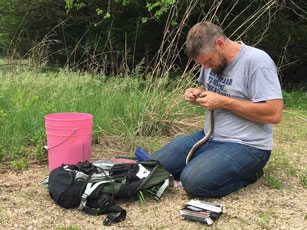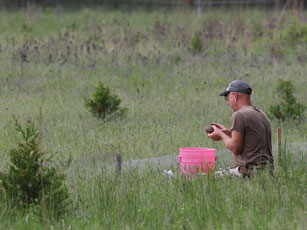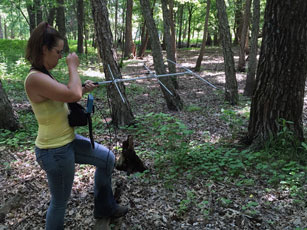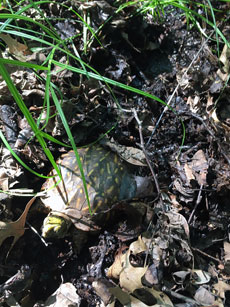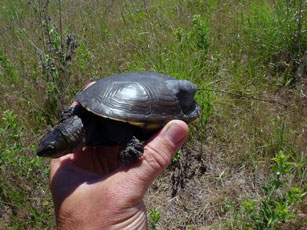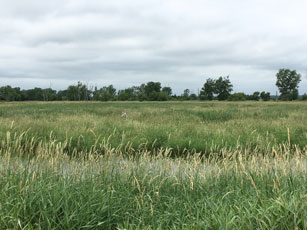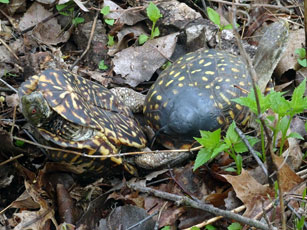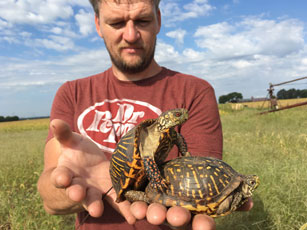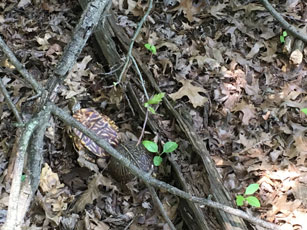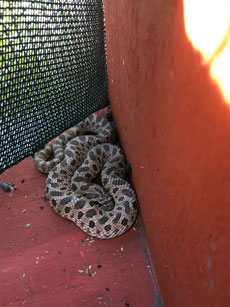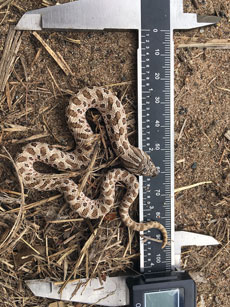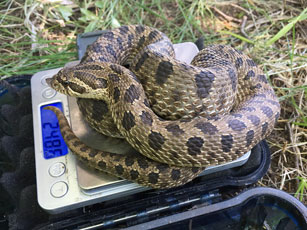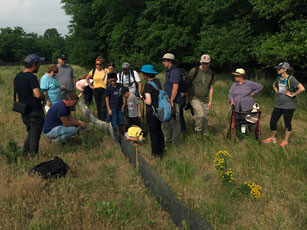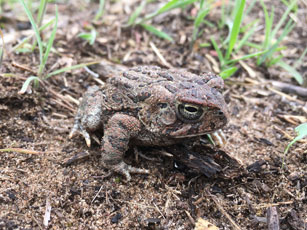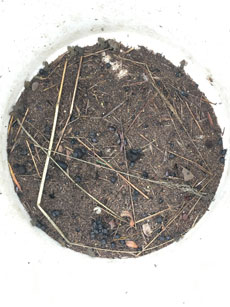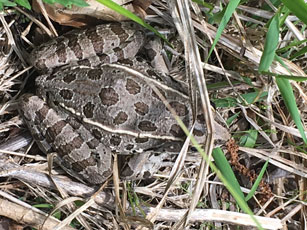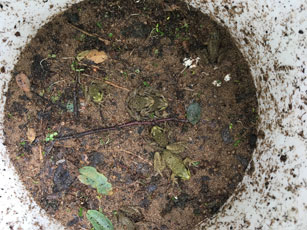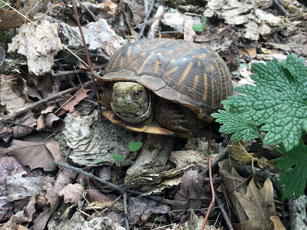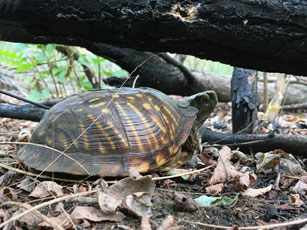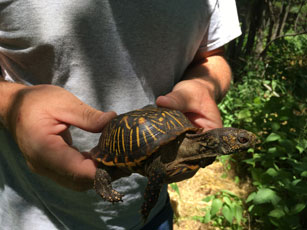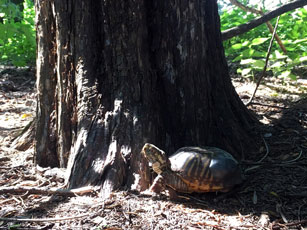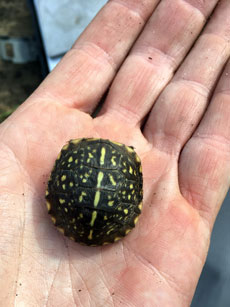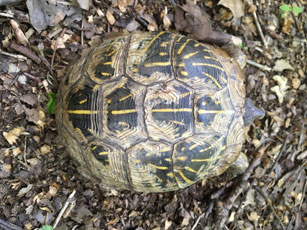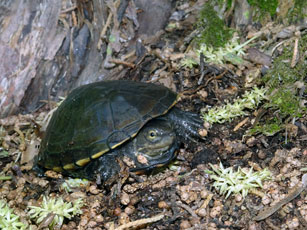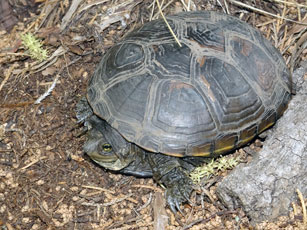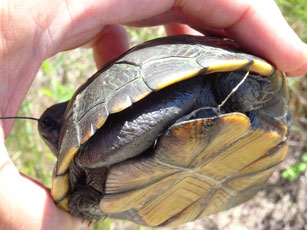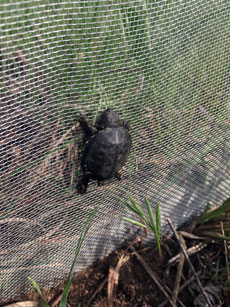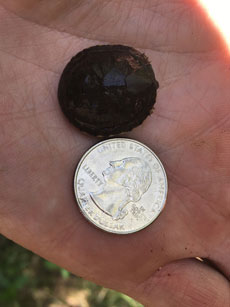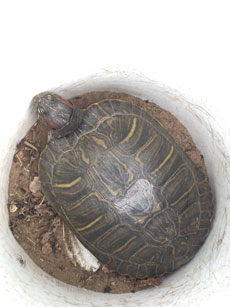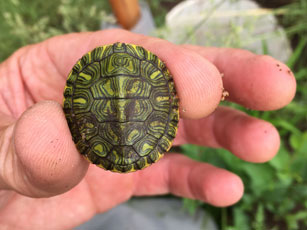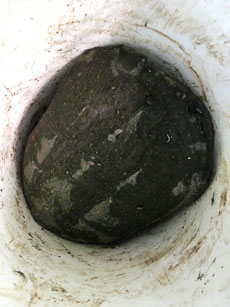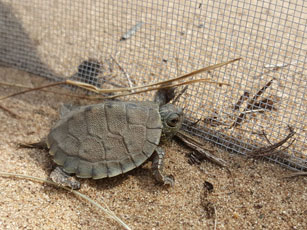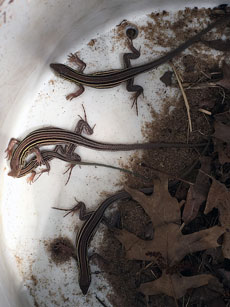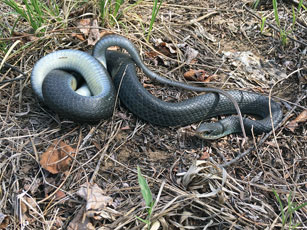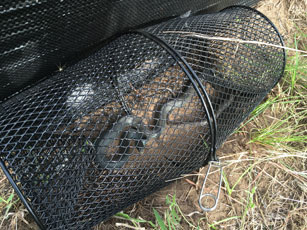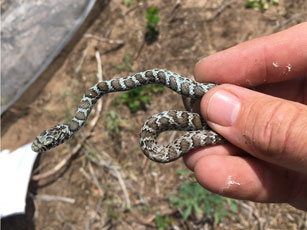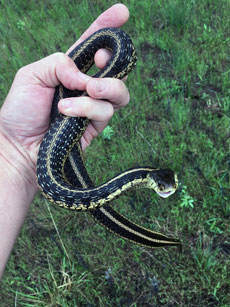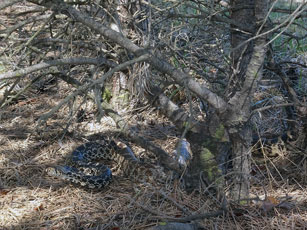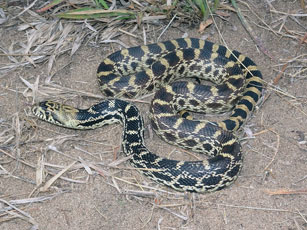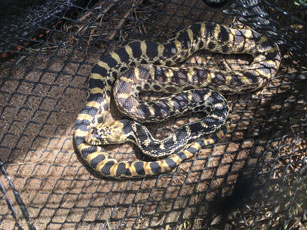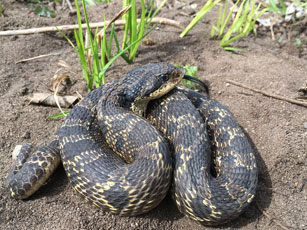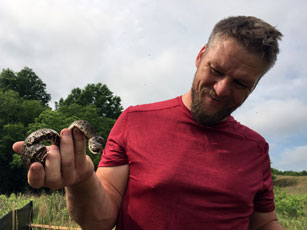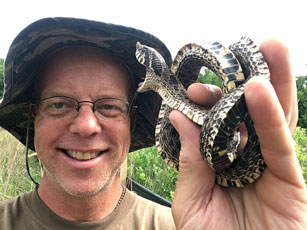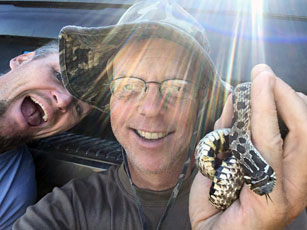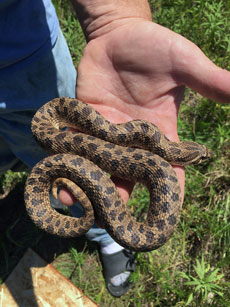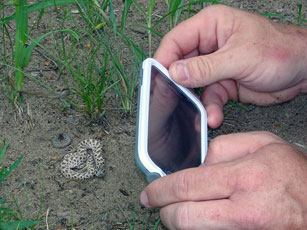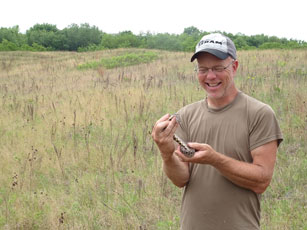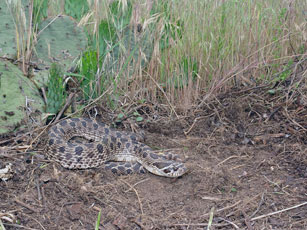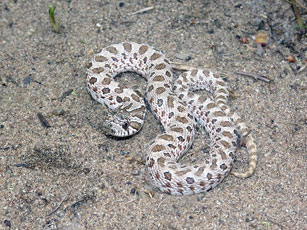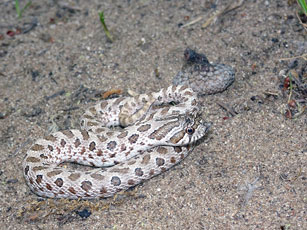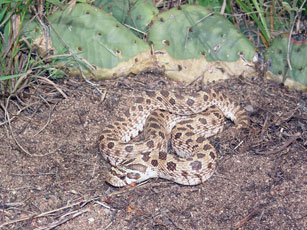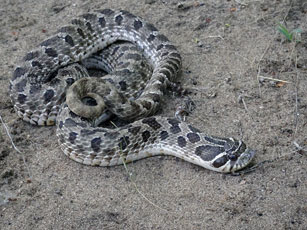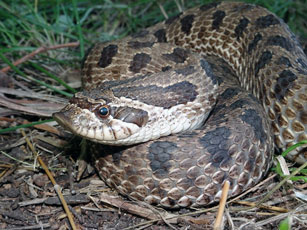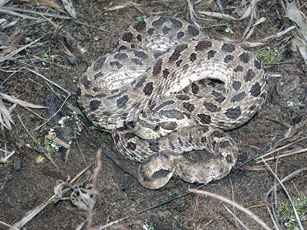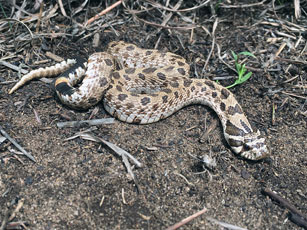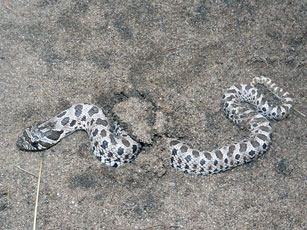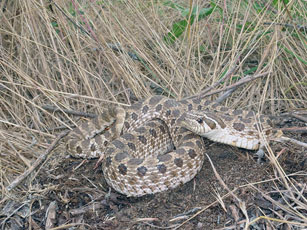
Big Sand Mound Research Project 2018
Trip Details
Location: Southeastern Iowa
Dates: March 23 through September 21, 2018
Herpers: Josh Otten, Ryan Rasmussen, Don Becker, Jim Scharosch and various other guests
Account by: Jim Scharosch
Photos by: Don Becker and Jim Scharosch
This isn't a typical Herpjournal post. Most HJ posts cover a single day trip and a location or two, though over the years a few have combined a couple of days into a single post. This post covers a project that ran for the entire 2018 herping season and possibly beyond. It won't be a herp by herp story or even a laundry list of what was seen as that wouldn't be remotely possible to accomplish. Instead I am going to post a lot of pictures and make some comments here and there.
There is an area in southeastern Iowa called the Big Sand Mound Preserve. The preserve is home to the only known populations of Yellow Mud Turtle and Western Hognose Snakes in Iowa. It also has the largest population of Ornate Box Turtles in Iowa. It is a unique habitat for Iowa, an area of large sand dunes with sparse vegetation and water features that fluctuate with the rise and fall of the nearby Mississippi River. Access to the preserve is limited to researchers and guided tours. It is an area that Iowa herpers don't get to visit.
I don't know how long this link will work, but here is a video that aired on Iowa Public Television about BSM. It was shot while we were working there and you can see Josh, Don and I at various points in the video. It goes into much more detail about the preserve that I want to take the time to write up here.
This project began with Josh Otten joining the board that oversees the preserve. Every few years a field study is conducted at the preserve to monitor the Illinois Mud Turtle population at the preserve, and Josh wrote up a proposal to do the field work in 2018. After his proposal was accepted, Josh got an opportunity to further his academic studies out of state so he was going to need help getting the project completed. We ended up with a plan where Don and I handled the field work during the week, Ryan Rasmussen took the weekends and Josh did as much as he could when he made it back to Iowa. It worked out great for me as I wasn't working a regular job anymore and had the time to work on what I would consider a dream project.
All the photos on this page were shot by Don or I. There are too many for me to keep track of, so I'm not going to try to credit each one to him or I.
Plants
The prickly pear cactus at BSM are really amazing.
This was the skull tree. We placed any skulls we found on this burnt up cedar tree stump.
The field work consisted of checking a couple of kilometers of drift fences every day. We recorded data for all animals (reptiles, amphibians and rodents) captured on the drift fences and while doing visual surveys as we walked the property. We also checked some cover objects we had laid on the ground at various locations. Mud turtles and western hognose snakes were pit tagged and ornates that were unmarked from previous studies were marked using standard procedures. We also did telemetry work on four ornate box turtles and six mud turtles. It would have been seven but one of the mud turtles dropped its transmitter very early in the study.
Field Work
Don inserting a pit tag in a Western Hognose Snake (Heterodon nasicus).
Me working up an Ornate Box Turtle (Terrapene ornata) found on the drift fence. This photo was taken by Sarah Marston.
My wife Laura Scharosch fighting off mosquitoes and tracking the box turtle we named Tres.
This is where we found Tres that day. You can see his transmitter. It was the only time we saw Tres in this area and the only time we found him digging around in the mud near a wetland.
A Yellow Mud Turtle (Kinosternon flavescens) with transmitter, prior to release.
Don tracking a mud turtle in a vast sea of grass and water.
A bit of proof that the transmitters don't interfere with day to day activity. The female box turtle in this picture had been kept overnight so we could attach the transmitter. She was released about five minutes prior to this photo being taken.
Although, if box turtles are in the mood they can be very single-minded. That male is a turtle we tracked named Dos. They weren't like that when we found them, they actually locked up right in Don's hands like that.
We walked up on A LOT of turtles that were in the process of making more turtles.
A juvenile western hognose snake in a funnel trap on a drift fence. This was the first small hog we captured.
A hog with the calipers we used for measuring turtles.
They usually didn't cooperate quite this well for weighing, an adult hog sitting nicely on the scale.
This was from the field day shown in the IPTV video. Don and Josh are explaining some of the work being done and the animals on the drift fence.
The rest of the photos are of animals we found during the project. I don't have representative photos of each species we found, and my photos are heavily weighted towards the animals I was most interested in. The reason for that is the pics I took were taken outside of the scope of the project. I rarely took photos apart from the voucher shots that were taken for the database record. Also, mud turtles are notoriously hard to photograph so I didn't take a lot of time with them. So there are a lot of hognose pics at the bottom of the page.
Amphibians
I was really bad taking photos of amphibians. Here are a few token shots.
A Fowler's Toad (Anaxyrus fowleri). We recorded over a hundred and skipped recording about a million.
The fowlers toad toadlets were so thick after they came on land that they were everywhere. Here is one bucket on the drift fence, there were buckets with way more than that.
We saw a couple of Plains Leopard Frogs (Lithobates blairi). This was a first for me. All I got was a terrible cell phone shot.
We found a decent number of Green Frogs (Lithobates clamitans) on the fence too.
We also saw a variety of other amphibians including American Toad (Anaxyrus americanus), Blanchard's Cricket Frog (Acris blanchardi), Boreal Chorus Frog (Pseudacris maculata), Bullfrog (Lithobates catesbeianus), Gray Treefrog Complex (Hyla chrysoscelis/versicolor), Northern Leopard Frog (Lithobates pipiens) and Southern Leopard Frog (Lithobates sphenocephalus). Our numbers were not high for a lot of the frogs because we spent little time on the waters edge and when we were we were tracking turtles and not stopping to record frogs.
Ornate Box Turtles
Ornate box turtles are very common at BSM. We encountered 367 different ornates during the season. We had a total of nearly 800 sightings, though that also includes the telemetry sightings.
This is Cuatro, a female we tracked. She spent most of her time in a very small area of the preserve, unlike some of the turtles who ranged quite a ways from their overwintering sites.
A juvenile ornate captured on the drift fence.
This ornate's shell had seen better days.
Mud Turtles
It took a while for the first mud turtle to show up. We were more than a little nervous about it until Ryan got two on the drift fence on May 4th. We ended up with 14 live mud turtles. We also found three deceased mud turtles.
A young mud turtle.
An adult mud turtle.
An adult male mud turtle. You can see the transmitter and the extremely large tail the males possess.
A juvenile mud turtle, as found climbing the drift fence.
The same juvenile mud turtle, for scale.
Other turtles
Red-eared Sliders (Trachemys scripta elegans) were the most commonly seen turtle outside of the box turtles.
Large ones were found in the drift fence buckets
Small ones were found in the buckets and along the fence.
Same thing with the Common Map Turtles (Graptemys geographica)
Head first into the bucket.
A baby along the fence.
We also saw False Map Turtles (Graptemys pseudogeographica), Painted Turtles (Chrysemys picta), and Snapping Turtles (Chelydra serpentina) in varying numbers.
Lizards
Six-lined Racerunners (Aspidoscelis sexlineata) are very common at BSM and are the only lizard on the preserve. We recorded around 250 of them, and there were way more that we skipped recording. I never stopped to take any photos, so here is a voucher shot from one of the buckets on the drift fence.
Snakes
By far the most common snake seen was the Racer (Coluber constrictor), with 74 records taken. Many had a nice blue-gray dorsal color and clean white ventral. This one was photographed on a cold morning so it was willing to lay still. Most were warm and wary and wanted no part of posing for photos.
An adult racer in a funnel trap and a juvenile racer in hand.
The next most sighted snake was the Common Garter Snake (Thamnophis sirtalis). Most were similar to this one, with very little red on the sides of the snake. We recorded 34 garter snakes, with many being found under cover objects we had laid out.
I was honestly surprised at how few Bullsnakes (Pituophis catenifer sayi) we found. I expected to see quite a few, especially with the cover objects and the funnel traps we had placed. We only found five during the duration of the study, and the one on the left above was found crossing the road just outside the preserve.
Here is a bullsnake in a funnel trap.
I also expected to see more Eastern Hognose Snakes (Heterodon platirhinos), especially since we saw this one in late April. Even with seeing one that early, it ended up being the only one we saw. I also documented this snake on a separate herpjournal page and included a video.
We also recorded a handful of other species of snakes in very small quantities. These included two Brown Snakes (Storeria dekayi), two Northern Water Snakes (Nerodia sipedon), two Western Fox Snakes (Pantherophis vulpinus) and six Western Ribbon Snakes (Thamnophis proximus).
Well, I saved the best for last. Well, the best for me anyway. As much as I enjoyed everything at BSM (even the rodents) the Western Hognose Snakes were my main draw here. They were what I really wanted to find. In previous studies they had been recorded, but were not a main focus of the work done. While our main focus was still the mud turtles, we were going to put more energy into finding hogs than what had been expended previously. Early on we realized that the main drift fence was not in optimal hog habitat so when Josh mentioned that one area had very similar vegetation to where he had found hogs previously Don and I set up a third drift fence in that area. We dubbed it the Hog Fence.
With a lot of fence and funnel traps out, and us spending a lot of time doing visual encounter searches we were still striking out completely on western hogs. We had an eastern hog on 4/26, our first ornate box turtle on 4/28 and an adult bullsnake on 4/30 and we were late into May and still hadn't found a western hognose. On May 25th Don and I were hiking across the top of a ridge and were discussing the situation. Well, I was complaining more that discussing. Don correctly mentioned that they were difficult to find because they hide a lot, but I countered with the fact that at other sites I have walked them up regularly, even without the aid of the traps and cover objects we had out here at the preserve. I probably complained all the way to the Hog Fence. Well, that day I discovered that complaining brings results.
It was the first western hog of a total of 20 individuals and 5 recaptures. We had one juvenile we caught three times in the same funnel, even after we put it on the other side of the fence.
Sometimes it is like the herp gods are smiling on you.
We got big ones...
And little ones...
Needless to say I was pretty giddy.
Here are a bunch more pics.
Obviously this was an amazing experience. So many fun and memorable things happened that I couldn't even begin to write up. Thanks to Josh Otten for giving us the opportunity and to the preserve board for giving Don and I a chance to prove that a couple of herpers could do the field work as well as anyone. Don was very instrumental in arranging all of this from both the logistical and technical aspects and I can't thank him enough for all he did too. We are hoping to do some follow up work in the spring to see where our transmitter carrying turtles end up wandering in the early season. I can't wait.

